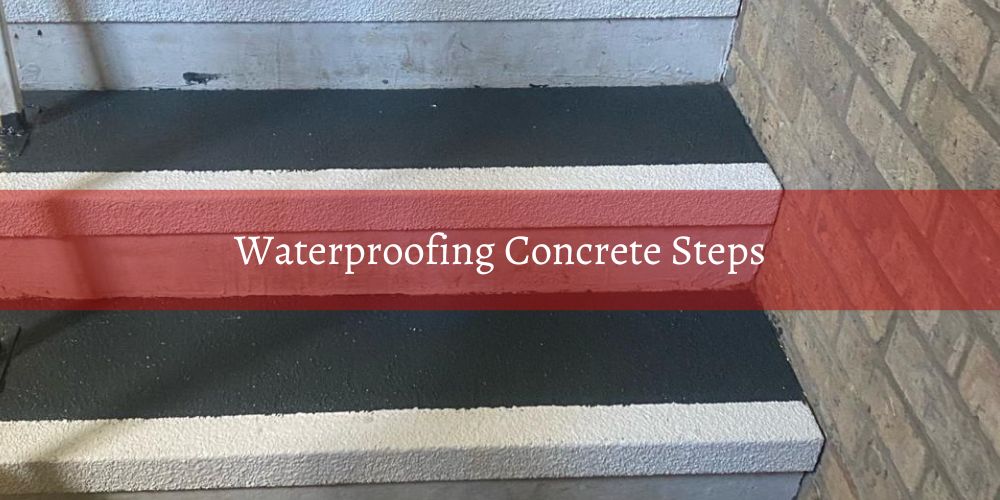Waterproofing concrete steps involves applying specialized waterproofing materials to protect the steps from water infiltration and damage. This process includes cleaning and preparing the surface, applying a primer, and then using waterproof membranes or coatings to create an impermeable barrier. Effective waterproofing prevents issues such as cracking, spalling, and erosion, ensuring the durability and safety of the steps. It also helps maintain their appearance and reduces long-term maintenance costs.
Car Park Waterproofing Systems provide expert solutions for waterproofing concrete steps, ensuring long-term protection against water ingress, freeze-thaw damage, and surface erosion. Concrete staircases in and around car parks are highly exposed to foot traffic and the elements, making effective waterproofing essential for safety and durability. We apply robust, slip-resistant systems including mastic asphalt, liquid polyurethane, and PMMA coatings, which bond seamlessly to concrete substrates and accommodate structural movement without cracking. These coatings can be finished with textured surfaces to improve grip and safety in wet conditions, and are suitable for both internal and external staircases. With precise preparation and expert installation, Car Park Waterproofing Systems deliver watertight, resilient concrete steps that stand up to daily use and harsh environmental conditions.
What Is Waterproofing Concrete Steps?
Waterproofing concrete steps involves applying protective measures to prevent water infiltration, which can cause significant structural damage over time. This process typically includes cleaning the steps thoroughly to remove dirt and debris, applying a waterproofing sealant or membrane, and ensuring proper drainage around the steps. The sealant forms a barrier that protects the concrete from moisture penetration, reducing the risk of cracks, spalling, and other water-related damage. According to the Chartered Institution of Building Services Engineers (CIBSE), effective waterproofing can prevent up to 80% of structural damage caused by water ingress. This is particularly important in regions with frequent rainfall or freeze-thaw cycles, such as the UK, where maintaining the integrity of concrete structures is vital for long-term durability and safety. Additionally, waterproofing concrete steps enhances their aesthetic appeal and prevents issues such as mold and mildew growth, contributing to a cleaner and more attractive appearance.
Have a question about an upcoming project?
What Are The Benefits of Waterproofing Concrete Steps?
Waterproofing concrete steps offers numerous advantages that extend beyond mere water resistance. The most critical benefit is the protection of structural integrity, which prevents long-term damage and maintains the durability of the steps. Additionally, waterproofing significantly extends the lifespan of concrete steps, reducing the need for frequent repairs. Preventing water damage not only preserves the structural soundness but also enhances safety by mitigating slip hazards. Further, waterproofing is a cost-efficient strategy that provides substantial long-term savings. Enhanced aesthetic appeal, compliance with regulations, and environmental sustainability are also key benefits that contribute to the overall value and functionality of waterproofed concrete steps.
- Structural Integrity Protection
- Extended Lifespan
- Prevention of Water Damage
- Enhanced Safety
- Cost Efficiency
- Improved Aesthetic Appeal
- Regulatory Compliance
- Environmental Sustainability
1. Structural Integrity Protection
Waterproofing concrete steps is crucial for protecting their structural integrity. Water infiltration can cause significant damage, such as the corrosion of steel reinforcements and the deterioration of the concrete itself. According to the Chartered Institution of Building Services Engineers (CIBSE), effective waterproofing can prevent up to 80% of structural damage caused by water ingress. In the UK, where frequent rainfall and damp conditions are common, maintaining the structural integrity of concrete steps through waterproofing is essential for ensuring their long-term stability and safety. This protective measure helps prevent issues like freeze-thaw damage, where water freezes and expands within the concrete, causing cracks and weakening the structure over time.
2. Extended Lifespan
Waterproofing significantly extends the lifespan of concrete steps by protecting them from water-related damage. Research by the Building Research Establishment (BRE) indicates that well-maintained waterproofing systems can double the service life of concrete structures, typically extending their lifespan from 30 to 50 years. By applying durable waterproofing materials, the need for frequent and costly repairs is minimized, ensuring that the steps remain functional and durable over an extended period. In the UK's variable climate, high-quality waterproofing materials are essential for providing long-term protection against environmental stressors such as rain, snow, and temperature fluctuations that can cause wear and tear.
3. Prevention of Water Damage
Effective waterproofing prevents water damage, such as cracks, spalling, and efflorescence, which can compromise the integrity and appearance of concrete steps. According to the American Concrete Institute, waterproofing can reduce the rate of concrete deterioration by up to 75%. This is particularly important in the UK, where water ingress can be exacerbated by freeze-thaw cycles, leading to significant structural damage. By creating an impermeable barrier, waterproofing systems prevent water from penetrating the concrete, thereby maintaining its integrity and appearance. This protection not only preserves the aesthetic quality of the steps but also ensures their structural soundness, reducing the need for frequent maintenance.
4. Enhanced Safety
Waterproofing enhances the safety of concrete steps by preventing hazardous conditions such as slippery surfaces and ice formation. The Health and Safety Executive (HSE) reports that well-maintained surfaces can reduce the risk of slips, trips, and falls by up to 30%. In the UK, where wet and icy conditions are frequent, ensuring that concrete steps remain dry and safe is crucial for protecting both pedestrians and vehicles. Effective waterproofing minimizes the risk of accidents and injuries, contributing to a safer environment in residential, commercial, and public spaces. This is particularly important in high-traffic areas where the safety of users is a top priority.
5. Cost Efficiency
Investing in waterproofing is a cost-efficient strategy that prevents the need for extensive and expensive repairs in the future. The Building Research Establishment (BRE) reports that preventive maintenance, including waterproofing, can reduce overall repair costs by up to 40%. By addressing potential water ingress issues early on, property owners and facility managers can avoid the high costs associated with major structural repairs and emergency maintenance. In the UK, where the cost of construction and repair is high, waterproofing provides a cost-effective solution for maintaining the functionality and appearance of concrete steps. Proactive waterproofing measures can save significant financial resources by mitigating the need for frequent repairs and extending the lifespan of the concrete.
6. Improved Aesthetic Appeal
Waterproofing helps preserve the aesthetic appeal of concrete steps by preventing water stains, efflorescence, and other forms of water damage that can detract from the visual quality of the facility. The Urban Land Institute notes that aesthetically pleasing properties can increase property values by up to 10%. In the UK, maintaining an attractive appearance is vital for commercial and residential properties to stay competitive. Effective waterproofing ensures that concrete surfaces remain visually appealing, reflecting well on the property's overall management and enhancing user satisfaction. This aesthetic preservation not only enhances the property’s curb appeal but also contributes to a positive impression among tenants and visitors, making the space more inviting.
7. Regulatory Compliance
Regular waterproofing of concrete steps helps ensure compliance with UK building regulations and safety standards. The Construction Industry Research and Information Association (CIRIA) emphasizes the importance of maintaining watertight and structurally sound facilities to meet regulatory requirements. Compliance with these standards helps avoid fines and legal liabilities, ensuring that walkways operate within the legal framework. By addressing waterproofing issues, facility managers can meet all relevant safety and accessibility regulations, promoting a safe and legally compliant environment for all users. Adhering to these regulations not only prevents potential legal complications but also demonstrates a commitment to maintaining high safety standards, enhancing the facility's reputation.
8. Environmental Sustainability
Waterproofing concrete steps can incorporate sustainable practices, such as using eco-friendly materials and improving drainage systems to manage stormwater runoff effectively. According to the Environmental Protection Agency (EPA), sustainable waterproofing practices can reduce a facility’s carbon footprint by up to 30%. In the UK, where environmental regulations are becoming increasingly stringent, incorporating sustainability into waterproofing projects can help property owners meet these requirements and enhance their reputation as environmentally responsible businesses. Using recycled materials in the waterproofing process and implementing effective drainage solutions also contribute to environmental protection and sustainability. This approach not only benefits the environment but also aligns with the growing demand for sustainable building practices, appealing to eco-conscious tenants and stakeholders.
To learn more about waterproofing concrete steps or to get a quote for your upcoming project, click the button below. Our experts are ready to provide you with top-quality waterproofing solutions.


